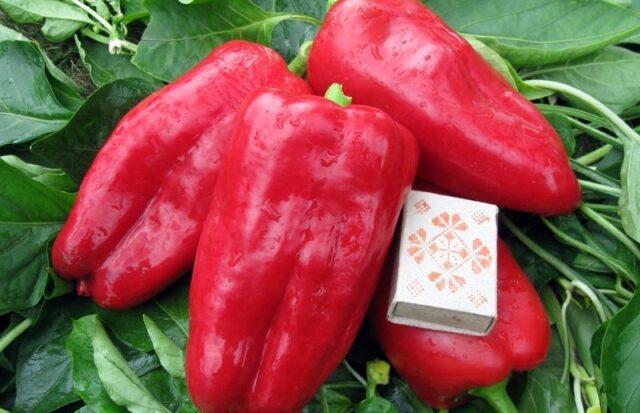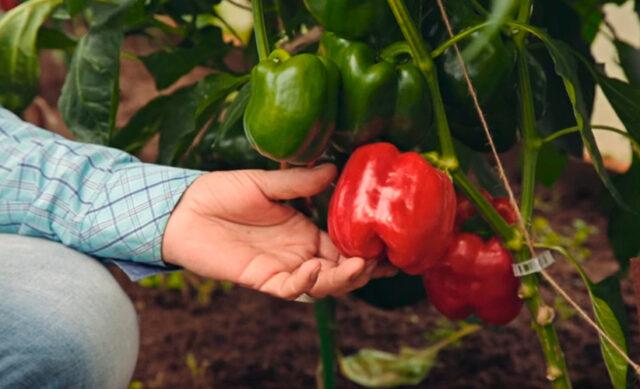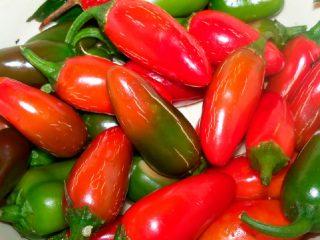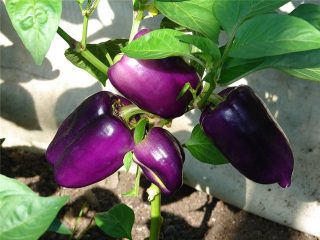Content
Blossom rot on peppers leads to damage to the side surfaces of the fruit. Small watery spots appear first. Gradually they increase in size and occupy a significant area, then dry out, which leads to a deterioration in taste. Blossom blossom most often develops due to hot weather and insufficient watering, although it can also be associated with pathogenic bacteria. Treatment of the disease is complex, using fertilizers, medications and folk remedies.
Symptoms of blossom end rot
Blossom rot is a disease that affects peppers and many other crops (tomatoes, cucumbers, eggplants, zucchini). Has two forms:
- Infectious - associated with pathogenic bacteria, infects neighboring plantings.
- Non-infectious - occurs only with a lack of moisture, has nothing to do with fungi or bacteria.
In both cases, the main symptoms of the pathology are watery spots that appear on the sides of the ripening fruit. They increase in size and acquire a dark brown color.Then they dry and press inside. The spots shrink, unite along the fruit and increase to 8 cm in length.

Blossom blossom practically does not affect the upper parts of peppers, which is typical for a similar disease of tomatoes.
The pathology is dangerous because it can lead to the death of the bush. Plants lag behind in development, the taste of fruits deteriorates. They cannot be eaten or sold. Even small spots mean you have to throw away the crop.
Causes
Blossom rot on peppers on fruits in a greenhouse appears for various reasons. They are often associated with improper care, as well as unfavorable weather conditions. The most common reasons are described below.
Calcium deficiency
Soils depleted in calcium compounds are often found. Moreover, even when summer residents apply appropriate fertilizers (for example, calcium nitrate), this also does not help, since other reasons are at work:
- The soil contains a lot of sodium, magnesium or potassium. They interfere with calcium absorption.
- Another reason for rot is that there is a lot of nitrogen fertilizer in the soil. They also interfere with the absorption of the main element.
- After a long drought, abundant watering is carried out, which interferes with the normal supply of calcium.
- Rot can also appear in cases where the soil is too acidic (pH less than 5.5). In such an environment, not only calcium, but also other vital elements will be poorly absorbed.
High air temperature
Pepper blossom end rot is often called a hot summer disease. If the weather is hot for a long time, more moisture evaporates from the surface of the leaves than normal. In this case, the root system does not always have time to replenish the losses, and the plant begins to draw water from the fruit.As a result, dry areas form on their surface and die off over time.
Other reasons
Blossom rot on seedlings and adult pepper bushes can also appear for other reasons:
- deficiency of phosphorus and manganese, unbalanced fertilizers;
- humidity changes - rapid alternation of dry and humid air;
- irregular ventilation of the greenhouse;
- deviation of soil pH from the norm - below 5.5 (acidic) or above 7.5 (alkaline);
- damage to the root system of pepper when transplanting seedlings or during loosening;
- lack of digging, as well as too dense soil (large mass fraction of clay).

Very often, fruits suffer from blossom end rot due to insufficient watering and too dry air.
Therefore, treatment must be comprehensive; if necessary, pests must be destroyed with special insecticides.
How to deal with blossom end rot on peppers
To combat blossom end rot, chemical and biological preparations, as well as folk remedies, are used. The danger of the disease is that it is impossible to determine the form (bacterial or non-infectious) by external signs. Therefore, just in case, you need not only to adjust watering and feed with calcium, but also to treat with the preparations described below.
Chemicals
Since blossom end rot of pepper is often associated with a lack of calcium, the first step is to apply root feeding based on calcium carbonate and calcium nitrate (saltpeter). Take 2 tbsp. l. each drug is diluted in 10 liters of water, mixed and watered (250 ml per plant).In emergency cases, you can also feed the leaves by thoroughly spraying the entire above-ground part of the plant.
To destroy bacteria, which can also cause blossom end rot in peppers, you should treat them with one of the effective fungicides:
- "HOM";
- "Bordeaux mixture";
- "Abiga Peak";
- "Cuprozan".
It is best to spray peppers in the late evening. When grown in open ground, treatment is carried out in calm and dry weather.
For example, if you spray peppers with Abiga-Peak, you can start harvesting only after 20 days.
Biological agents
To rid peppers of blossom-end rot, you can also treat them with biological preparations. Their advantage is a short waiting period - even 3-5 days after spraying, you can already harvest.
The most effective biological drugs include the following:
- "Fitosporin";
- "Gamair";
- "Alirin B";
- "Baktofit";
- "Fitop-Flora-S".

"Baktofit" is one of the best bacterial preparations for the treatment of rot
Traditional methods
Folk remedies for treating blossom end rot of peppers are quite effective, but only in the early stages of the disease. They are also used for prevention and treatment during fruiting, when it is too late to use many chemicals (due to long waiting times).
Among the popular and truly working folk methods for blossom end rot of pepper, the following recipes can be listed:
- Mix a glass of crushed chalk and 1 liter of food vinegar with a concentration of 9%, dissolve in 30 liters of water.
- Infuse bone meal (100 g per 2 liters of boiling water) for a week, then dilute it to 40 liters and begin processing.
- To cope with blossom end rot of pepper, infuse three glasses of wood ash in 10 liters of hot water, wait two days and start spraying.
- To treat blossom end rot of pepper, take 1 liter of milk of any fat content, dilute it with 9 liters of water and carry out 2-3 treatments at intervals of one week.
- Another way to treat rot is 10 drops of pharmaceutical alcohol iodine per 10 liters of water. You can add 1 liter of milk or 2-3 tablespoons of laundry soap shavings. Treatment is also carried out 2-3 times per season on a weekly basis.
Pepper varieties resistant to blossom end rot
Developments by breeders in recent years have made it possible to obtain several varieties and hybrids of pepper that are resistant to blossom end rot and a number of other diseases. The most famous varieties include the following:
- Miracle Tree F1 is a first generation hybrid, characterized by good immunity at the stage of seedlings and adult bushes.
- Agapovsky is a pepper variety with high resistance to blossom end rot, intended for cultivation in open ground in middle zone conditions.
- Latino F1 is another first-generation hybrid that is resistant to many diseases, including blossom end rot.
- Eroshka is a variety with good immunity to rot and viral pathologies; also characterized by high productivity.
Prevention of blossom end rot in peppers
Preventing the development of blossom end rot is much easier than fighting the disease. To prevent pathology, experienced gardeners recommend following these tips:
- Water evenly, without allowing the soil to dry out too much (when the soil cracks).Give water regularly at least once a week, twice as often in hot weather. In this case, you need to make sure that the surface layer of soil has time to dry out.
- Pepper is quite picky about the composition of the soil. The soil should be light, i.e. do not contain a lot of clay. The optimal composition is turf (surface) soil with humus, black peat and sand in a ratio of 2:1:1:1. If the soil is too dense, add up to 1 kg of sand or sawdust per square meter while digging.
- To prevent blossom end rot in peppers, it is equally important to control the pH of the soil. If the environment is too acidic (pH less than 5.5), before planting it is necessary to add dolomite flour or slaked lime (200 g per 1 m2). It would not be superfluous to add wood ash (150-200 g per 1 m2). You can determine the acidity level quite reliably using indicator paper or a pH meter.
- Loosening the surface layer of soil must be carried out regularly. But this must be done carefully, going to a depth of no more than 3-5 cm. Otherwise, there is a high risk of damaging the roots, which can also provoke the development of blossom end rot.
- Pepper seeds should be purchased from trusted suppliers. If the manufacturer has not carried out etching, you need to do it yourself, using a 1% solution of potassium permanganate or any fungicide.
- Pepper bushes are periodically inspected and destroyed by aphids, spider mites and other pests that are dangerous in themselves and can also be carriers of diseases.
- Also, to prevent the bacterial form of blossom end rot, it is necessary to disinfect the soil for seedlings by keeping it in the oven for 20 minutes at a temperature of 150 degrees.

Compliance with growing rules allows you to avoid disease and get a good harvest.
Conclusion
Blossom rot on peppers is associated with a variety of causes, including insufficient watering, unfavorable weather and unbalanced fertilizers. If you choose the right soil composition, and also monitor regular (but moderate) soil moisture, the disease can be avoided. If spots do appear on pepper fruits, it is quite possible to cure them at an early stage - for this they use drugs, fertilizers and folk remedies.












